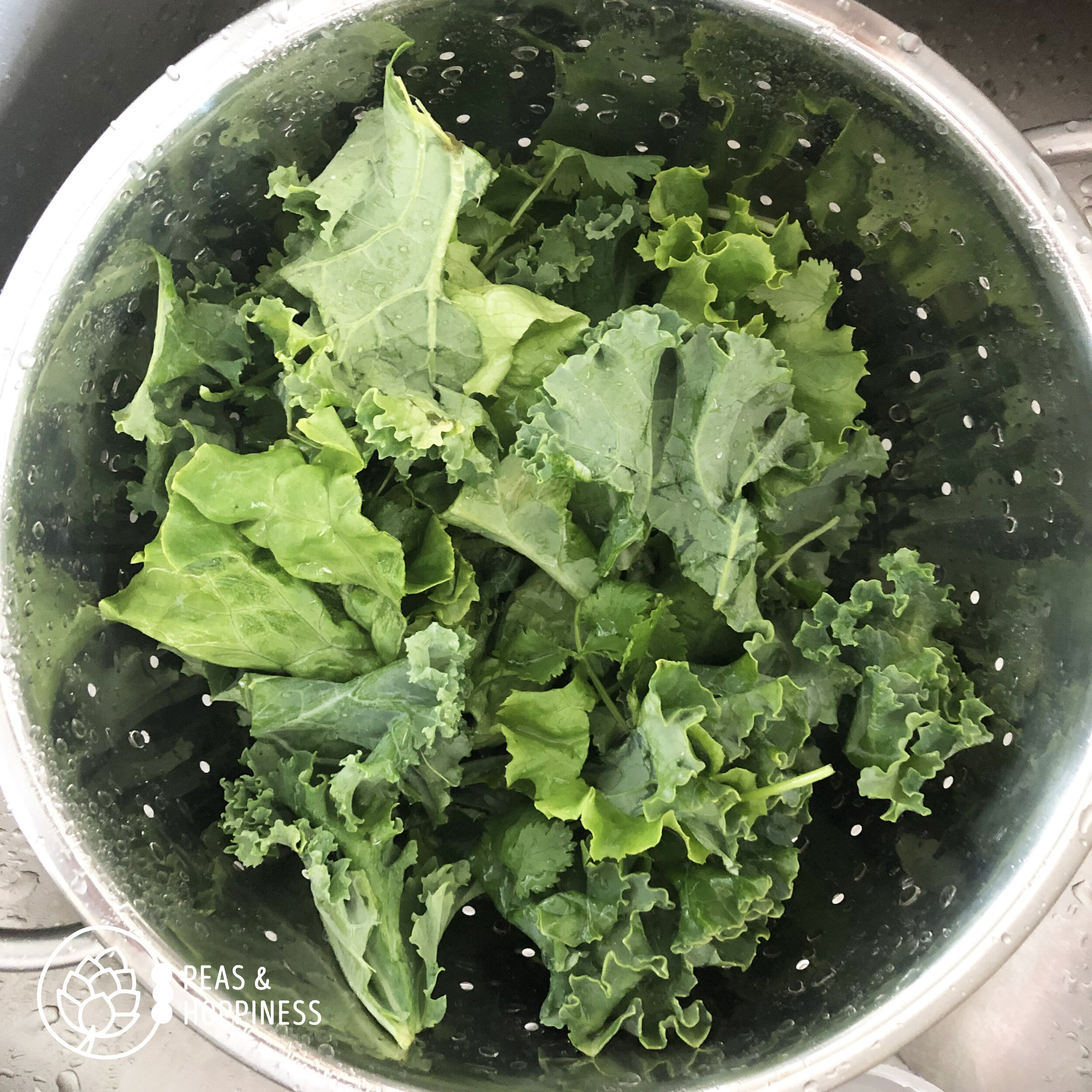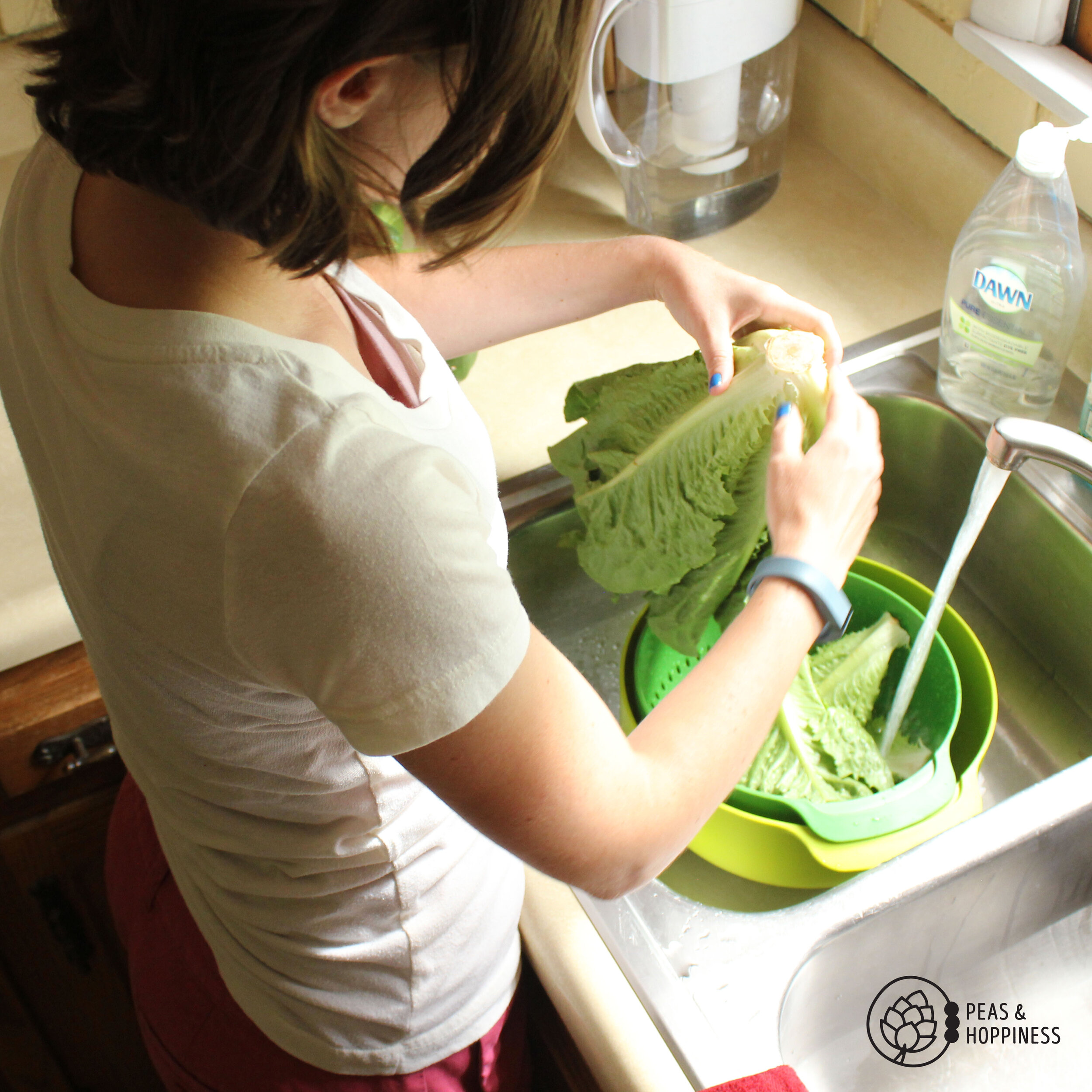
Which type of lettuce should you use? This overview of the nutrition information, flavor, and texture of different greens will help you choose the best option for your next spring salad.
There are few things better than a fresh, crisp green salad in May after a winter full of turnips, potatoes, and beets.
Don’t get me wrong, I love root vegetables – but eating seasonally means by the end of winter I’m really missing all things fresh!
So when the bag of fresh greens showed up in my CSA box from Miller farms, I nearly jumped for joy! (Read more about the benefits of Community Supported Agriculture)
It’s important to know that not all greens are created equal, so when you’re choosing what to use in your favorite salad you’ll want to keep in mind the flavor and texture which different greens impart.
Iceberg Lettuce Nutrition Facts
Flavor: Very mild
Texture: Crunchy
Nutritional Value: Medium-Poor – Very low calorie and comparatively high in fiber; excellent source of Vitamin K (but much lower than other types of lettuce)
3 cups iceberg: 10 calories — 1 g fiber — 8% Vitamin A — 4% Vitamin C — 2% calcium — 2% iron — 25% Vitamin K
Best Uses: As a filler, In place of bread or tortilla as a wrap
Romaine Lettuce Nutrition Facts
Flavor: Mild
Texture: Mild crunch
Nutritional Value: Medium-High – Excellent source of Vitamins A & K and Folate, very low calorie and comparatively high in fiber
3 cups romaine: 15 calories — 2 g fiber — 150% Vitamin A — 6% Vitamin C — 2% Calcium — 4% Iron — 110% Vitamin K, 30% folate
Best Uses: bulk for many types of salads (like this Buffalo Chickpea Salad), classic Caesar salad, topping on sandwiches, in place of tortilla or bread for a low-carb wrap
Red Leaf Lettuce Nutrition Facts
Flavor: Mildly bitter
Texture: mostly tender with slight crunch
Nutritional Value: Medium-High – Excellent source of Vitamins A & K, very low calorie and comparatively high in fiber
3 cups red leaf lettuce: 15 calories — 1 g fiber — 130% Vitamin A — 6% Vitamin C — 2% Calcium — 6% Iron — 150% Vitamin K
Best Uses: Salad!
Arugula Nutrition Facts
Flavor: Slightly bitter, spicy (like mustard)
Texture: tender
Nutritional Value: High – Excellent source of Vitamins A, C, K, and Folate; good source of calcium; very low calorie and comparatively high in fiber
3 cups arugula: 20 calories — 1 g fiber — 40% Vitamin A — 20% Vitamin C — 15% Calcium — 6% iron — 120% Vitamin K — 20% Folate — 9% Potassium
Best uses: as an addition to salads or by itself (although the flavor is stronger than other greens), as a garnish or topping to tacos, sandwiches, or flatbreads

Kale Nutrition Facts
Flavor: young, baby leaves are more mild while more mature leaves can taste more bitter
Texture: tender, but fibrous. Baby kale is more tender, but mature leaves must be massaged or cooked before eating.
Nutritional Value: High – Excellent source of Vitamins A, C, and K, folate, calcium, and manganese; good source of potassium; very low calorie and comparatively high in fiber
3 cups kale: 20 calories — 2 g fiber — 80% Vitamin A — 25% Vitamin C — 20% Calcium — 8% iron — 230% Vitamin K — 25% Folate — 30% Manganese — 10% Potassium
Best uses: raw in salads (like this Super Food Fall Salad), roasted into kale chips, sautéed and served with eggs, added to Grown-up Mac & Cheese or Lasagna, included in all kinds of soup – from lentil stews to Olive Garden’s famous Zuppa Toscana (kale holds up to long cooking times very well)
Spinach Nutrition Facts
Flavor: similar to kale – young, baby leaves are more mild, while more mature leaves can taste more bitter
Texture: Tender
Nutritional Value: Very High! – Excellent source of Vitamins A, C, & K, Folate, and manganese; good source of iron, magnesium, and riboflavin; very low calorie and comparatively high in fiber
3 cups spinach: 20 calories — 2 g fiber — 160% Vitamin A — 40% Vitamin C — 8% Calcium — 15% Iron — 510% Vitamin K — 40% Folate — 10% Riboflavin — 15% Magnesium — 40% Manganese
Best uses: fresh in salad (like this Red, White, and Blue Cheese Salad), on a sandwich, sautéed and served with eggs, steamed or sautéed and topped with vinegar and salt, added to Italian dishes (lasagna or cheese manicotti), in Spinach and Artichoke Dip, blended into a smoothie (it turns it green, but you don’t notice the flavor!)… the list goes on!
Looking for inspiration to use these greens? Check out some of my favorite salad recipes. I promise no bland rabbit food here – these salads are packed with flavor:
-
SPINACH: Strawberry Mango Spinach Salad
-
KALE: Super Food Fall Salad
-
ROMAINE: Buffalo Chickpea Salad
-
ROMAINE & SPINACH: Red, White, and Blue Cheese Salad
Want to learn more about eating seasonally? Grab my Seasonal Vegetable Guide so you know what veggies to pick the next time you’re in the produce aisle!
I hope you enjoy all of the fresh veggies this season! Happy eating,
Ann from Peas & Hoppiness

